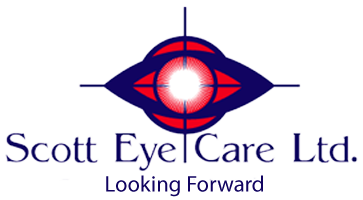
Nearsightedness, also known as myopia, is an incredibly prevalent vision condition, affecting around 30% of Americans, with an estimated 20-25 million children untreated in the United States alone. It develops when the eyeball grows longer from front to back than normal, with the symptom of blurry distance vision. Myopia tends to begin in childhood and worsen over time. This leads many to wonder - is nearsightedness genetic? Let’s explore the evidence surrounding myopia’s hereditary patterns.
Research Shows a Strong Genetic Link
Extensive research, including twin studies, family patterns, and genetic mapping, provides compelling evidence that genetics play a significant role in myopia. While environmental factors can also influence myopia risk, the hereditary component cannot be ignored.
Specific genetic variations affecting eye growth, development, and refraction have been identified that predispose people to nearsightedness. These genes often relate to connective tissues, neurotransmitters, and intracellular signaling. However, experts note there are likely numerous genes involved in determining myopia susceptibility and that environmental factors do play a role.
Overall, studies show parents who are nearsighted have a greater chance of passing myopia on to their children. The odds also increase if both parents are nearsighted. The precise risk depends on the severity of parental myopia as well as environmental exposures.
Ethnic patterns also demonstrate a genetic link. Asian countries, for example, have a much higher rate of myopia than European countries or the United States.
While genetics play a key role, lifestyle and environmental factors fine-tune how these predispositions manifest. But the bottom line is clear - nearsightedness has a powerful hereditary component overall.
Myopia Progression in Children
Since myopia most often develops and worsens during childhood, this is the period when genetic risk is most influential. Children with one or more myopic parents need close monitoring as their eyes continue to grow and develop refractive errors.
Rapid myopia progression is especially common between ages 8-15. This is a critical time when interventions can help safeguard a child’s eyesight and offset inherited risks. Implementing myopia control techniques at younger ages appears to have the greatest impact on slowing progression long-term.
The complex interplay between hereditary susceptibility and environmental exposures determines if and when myopia manifests and progresses in children. However, identifying and addressing genetic predispositions early helps preserve vision potential.
Warning Signs of Myopia Onset in Children
For children with a family history of nearsightedness, be vigilant about the following signs that may indicate myopia onset:
- Squinting or eye-rubbing
- Difficulty seeing the board at school
- Avoiding reading/close work
- Headaches after visual tasks
- Sitting very close to the TV
- Tilting head or closing one eye
- Holding objects close to face
Any appearance of nearsighted symptoms warrants a comprehensive eye exam to assess the child’s status.
Long-Term Impacts of High Myopia
In addition to blurred distance vision, high degrees of nearsightedness increase vulnerability for several blinding eye diseases later in adulthood. These include:
- Retinal detachment and tears
- Open-angle glaucoma
- Myopic maculopathy
Advancing myopia also further elevates the risk of vision loss from these ocular conditions. Catching and controlling early myopia development can therefore help preserve long-term eye health and function.
By understanding the hereditary factors at play and monitoring children’s eyes proactively, the impacts of myopia on visual and ocular health can be reduced over a lifetime.
Let Treehouse Eyes Help Your Child Manage Myopia
Compelling research confirms that nearsightedness (myopia) is influenced by genetic factors. And while they’re not the only factor, children with one or more myopic parents, especially at high degrees, need thorough eye exams starting at an early age to determine if they are developing refractive errors indicating myopia onset.
Through early detection and consistent treatment, the progression of inherited myopia risks can be significantly slowed. While genetic predispositions cannot be changed, being proactive allows for preserving a child’s vision and safeguarding their eye health over time.
Treehouse Eyes’ doctors use modern equipment to develop personalized treatment plans for your child. Our treatment plans include special prescription eye drops and customized daytime and overnight contact lenses. Treehouse Eyes doctors determine which treatment plan works the best for your child at your initial consultation. Schedule a consultation now to find out more.

*Saturday hours bi-monthly, please check with office to confirm we are open.